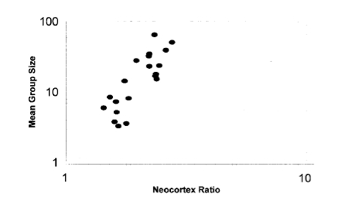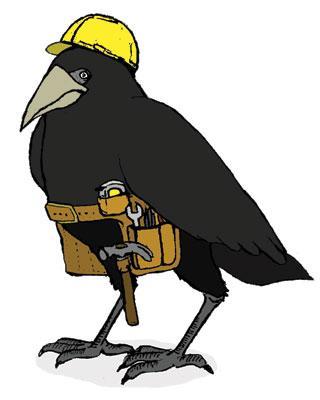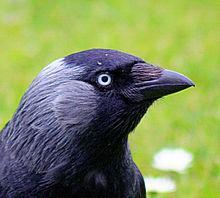The social brain hypothesis posits that one of the reasons large brains developed is to allow us to live well in large social groups. With a large brain we could remember more people, allowing us to live in larger groups. These allowed us to search a larger area for food/defend a larger territory/provided more mating opportunities etc.; resulting in selection for a large brain. The feedback loop between the brain size and group size ensued, resulting in our large brains.
Whilst the social brain hypothesis has been thoroughly studied in primates, there are also many lesser known non-primate examples. Perhaps the most surprising of these is the Corvids (crows, jays, ravens and jackdaws). Whilst most people know that crows are very smart animals, few are aware of just how clever they are. In fact, they’re considered the most intelligence bird group (aside from some parrots) with a brain as big as a chimps’ (once body size is taken into account, obviously it isn’t literally as big as a chimps’).

The relationship between brain size and group size in primates
The most obvious example of Corvid intelligence is their use of tools. Crows make hooks from twigs, which they then use to “fish” for insects. They also alter the tips of other sticks to create barbed spears, which they stab into piles of leaves to skewere unsuspecting insects (I guess crows must really hate insects). But their tool-based intelligence does not end there.

Crow tool use
When presented with unfamiliar material, such as wire, they are able to work out that these can also be turned into tools (and so do that). This suggests that they understand why the tools are effective (because of their shape) and are not just blindly repeating innate or learned actions. They can also use tools to solve new problems on the first try, without any trial and error, suggesting they can think into the future and imagine the solution to these challenges.
Another fairly well known example of Corvid intelligence is their ability to mentally time travel. Many species of crow store food for later, but will dig up their caches not in the order they were buried but in the order they will decay (i.e. insects before nuts). In one test they were given two new kinds of food, which they buried and then retrieved randomly. However, when they were taught that one kind of food decayed quicker they adapted their behaviour and started retrieving that kind first, again demonstrating how flexible and innovative their behavior can be (alas the research I’ve read does not explain how they were taught this, but I like to think it was done in a little crow-classroom with a crow-teacher writing on a crow-chalkboard).
Finally, we have their Machiavellian intelligence. Not many people know about this, but it is fascinating nonetheless. As I just said, crows like to bury food for later. However, this means that another crow can watch others, learn where they bury their food, then steal it later on. Other crows have realised this, so if they bury food whilst being watched by another crow they will soon return, dig up the food, then bury it another location where nobody else can see them! Again, this is a flexible, learnt behavior. Only crows which have stolen someone else’s food (or seen theirs get stolen) will move it around.

look at him, you can just tell he’s plotting world domination
As that last example illustrates, most Corvids do have very complex interactions with others in their group so they may be under the influence of the social brain hypothesis. Larger brains allow them to live in larger groups (which is beneficail) and to do so without having their food stolen by others. So it may well be that the same forces which are driving our evolution are also influencing how the crows evolve. Rise of the Planet of the Corvids anyone?
Regardless of whether Hitchcock’s The Birds soon becomes factually accurate, I find these examples of “human” evolution in other animals fascinating, and I hope you also find some comfort in that fact as your doom circles over head, cawing.
Emery, N. J., & Clayton, N. S. (2004). The mentality of crows: convergent evolution of intelligence in corvids and apes. science, 306(5703), 1903-1907.

